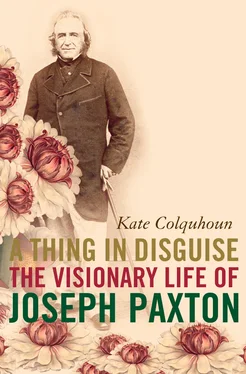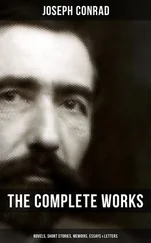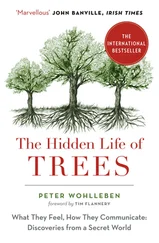He grabbed at every conceivable opportunity with indefatigable energy. In February 1834 he launched another, more ambitious, monthly magazine, The Magazine of Botany and Register of Flowering Plants . Priced at two shillings it offered detailed study of plants and their husbandry, containing four accurate and well-coloured engravings of the most prized new plants, as well as numerous other woodcut illustrations and a range of articles. It provided a cheaper alternative to magazines like the Botanical Register and, like its sibling the Horticultural Register ; it promised to break away from the elitism of most journals, by using the most plain and intelligible language possible. Aiming for the broadest appeal, it would give botanical descriptions of plants in English, the culture of plants in short paragraphs and calendars of work for each month. Unsurprisingly, it was badly reviewed by Loudon who damned it as only ‘useful to the manufacturers of articles which are decorated with the figures of plants … To botanists it is of no use, as the plants are neither new, nor described with scientific accuracy.’ But the new magazine would be steadfastly supported for a generation, augmenting not only Paxton’s reputation, but his income.
The Magazine of Botany was, from the start, printed by Bradbury and Evans of Whitefriars, London (in 1835 they also took over the printing of the Horticultural Register ). William Bradbury, three years Paxton’s senior and a famed liberal employer, would become one of the greatest of all Paxton’s friends. Along with his partner, Frederick Mullett Evans, the company printed Charles Dickens’ novels, and built a reputation as one of the most efficient printing firms in England, with twenty of the most modern steam-driven presses running 24 hours a day, and a specialisation in illustrated magazines and fine-art printing.
Throughout 1834 Paxton’s contributions to the Horticultural Register declined sharply. He chose to review Hortus Woburnensis – the descriptive catalogue of Woburn plants compiled by the Duke of Bedford’s gardener James Forbes – on the whole favourably, while deploring its lack of concision. Bedford and Forbes had initiated similar schemes at Woburn as Paxton and the Duke and there was healthy competition between them. *
The journalistic battle continued to rage between Loudon and Paxton in their respective magazines. Plagiarism in the form of reprinting the abstracts of articles from rival papers was the norm, driven by commercial realities, but it was one of the key areas of contention between the two men. Although the new magazine was more about plants than horticulture, Paxton included short articles on the subjects about which he and the gardening world were most preoccupied, including designs for greenhouses, different methods of heating stoves and designs for ornamental labourers’ cottages. Many of these were themselves reprints from the Horticultural Register , including those on moving large trees and designing subscription gardens, and some were taken from Loudon’s magazine, which infuriated him.
At the start of April 1834, the Duke wrote to Paxton from Florence asking him to leave immediately for Paris, with a small monkey puzzle and some rhododendrons. He wanted him to see the gardens at Versailles and St-Cloud, but he gave him little more than a week to organise his journey: ‘if you cannot arrive by the 20th in Paris, you had better not come’. Paxton left immediately, arriving on the 19th, his lips blistered and cracked by the speed of the journey. The following day they visited the Louvre and Palais Royal together on foot. They went on to visit St-Cloud and several private gardens, all the while collecting plants and seeds for Chatsworth. At the eighteenth-century Jardin des Plantes they saw vast, inspiring new glass ranges, unlike anything they had ever seen. When the Duke left for London, he ordered Paxton to stay a further week to purchase horses for him at the Russian horse sale, and to see the grand waterworks on display at Versailles at the start of May.
Paxton was bursting with excitement and news of his first foreign tour: ‘I wish to God you were here seeing all these things with me, you would be quite delighted,’ he wrote to Sarah. ‘I shall not be able to contain myself until you are acquainted with the details of my journey … I have come so far and seen so much that it seems an age since I left home.’ He was irritated by officials at French customs, by the lack of soap in the Hôtel du Rhein in the Place Vendôme and by the dirty streets. He was caught up by Ridgway, the Duke’s steward, and Santi, his Russian servant, and taken to a gambling house where ‘Santi was a fool enough to lose £ 70 … they wanted me to try my luck but I know better – Santi was like a madman all yesterday.’ He caught cold at the horse market and was laid up for a week with only Coote, the Duke’s musician, left with him. In his letters home, he complained that the hotel staff were so stupid that he could have died for all they cared – the merest trifle took them up to an hour to bring.
The waterworks at Versailles were a disappointing affair to Paxton, who found them ‘not half so fine as I anticipated’. It was intolerably hot, and there were crowds of thousands. What did impress him were the immense numbers of horse soldiers gathered to be received by the King. As he set his face again for London, keen to see Sarah and the children and hoping that he would not be delayed by the Duke, he vowed that he would never forget it. In London, he found a packet of letters from Sarah awaiting him, eager to know all his news. But all at once, he was up to his eyes with things to do for the Duke and ‘the hurry and confusion I am in renders it almost impossible for me to answer any of your questions’, he wrote. He assured her that he would return to Chatsworth with the Duke in two days, and rescue the reins of Chatsworth management from her. In the meantime it was down to her to call all the men in from the woods, arrange for the gardens to be neat and clean, and to order the men to lay down new gravel along the east front of the house. He told her that the tiger at Kew Gardens had died – which upset him far less than the loss of a plant at Chatsworth.
By the time the Duke arrived at Chatsworth in the middle of May after an absence of nearly six months, he found the new greenhouse completed in the kitchen garden. He was delighted. Soon, the two men were plotting great improvements together, while entertaining or visiting botanists around the country. In October, the Glasgow botanist, William Hooker, came to stay at Chatsworth, and in November, Paxton and the Duke travelled to Liverpool to see the botanic gardens there. In effect, these Liverpool gardens, only ninety or so miles from Chatsworth, were the first municipal gardens in England, albeit established by private subscription at the turn of the century. They had just moved from the city centre to a more rural site, and the Duke now considered them worth going a thousand miles to see. Correspondence between both men was now filled with horticultural news: William Aiton sent plants from Kew including some trees (‘generous Aiton. Treasure!’ wrote the Duke), Countess Amherst sent news of wonderful new plants from Montreal, the Duke was offered a collection of American aloes by a gardener in Chesterfield, the new arboretum in the pleasure grounds at Syon was charming. The two men were inspired.
At the end of the year, as with the Horticultural Register , Paxton gathered up the year’s parts of the Magazine of Botany and published them as a single volume, which he dedicated to his patron ‘with the greatest respect and gratitude … in testimony of his … enthusiastic love of botany … and … as an acknowledgement of the innumerable favours conferred on his Grace’s obliged and most obedient servant Joseph Paxton’. It was usual to flatter the sympathies of patrons, but it is possible that Paxton was nudged into this first dedication by William Hooker, Professor of Botany at Glasgow and future director of Kew Gardens. Recently, Hooker had written to thank the Duke for his stay in Derbyshire, adding ‘I cannot tell you what delight it gives me, who has devoted at most thirty years uninterruptedly to the study of Botany, to find a nobleman of your … distinguished rank and fortune so zealously devoted to this delightful pursuit … the next volume of The Botanical Magazine completes the 8th volume and after the botanical and intellectual feast I have enjoyed at Chatsworth, I was irresistibly led to dedicate that volume to your Grace.’
Читать дальше











